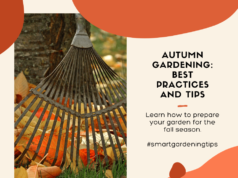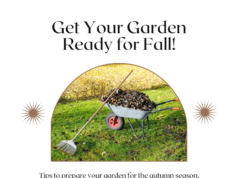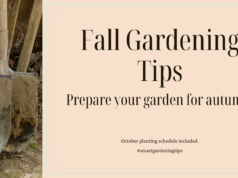
Spring is the perfect time to start your garden, but getting started can be overwhelming. When should you start? What should you plant? What tasks are essential for a successful gardening season? In this section, we’ll provide you with essential tips and advice for early spring gardening so that you can make the most of this season.
Key Takeaways
- Early spring is the perfect time to start your garden.
- Timing is crucial when it comes to early spring gardening.
- Preparing your garden for spring is an essential task.
- Maximizing bloom in early spring requires proper planning.
- Ongoing maintenance is required to keep your garden healthy throughout the season.
When is the best time for early spring gardening?
To make the most of your early spring garden, it’s important to understand the best time to start planting. The optimal timing can vary depending on your location and the specific plants you want to grow. However, as a general rule of thumb, the best time for early spring gardening is when the soil has warmed up to at least 50°F and is no longer waterlogged.
Most plants prefer to be planted when the soil has warmed up from the winter. This is usually around early to mid-spring, but it can vary depending on your location. It’s important to consider your local climate and predicted weather patterns to determine the best time to start planting.
Some plants, like peas, spinach, and radishes, prefer cooler temperatures and can be planted as soon as the soil is workable. On the other hand, warm-weather crops like tomatoes and peppers should be planted later in the season when the threat of frost has passed.
Best time to plant in early spring
Below is a table outlining the best time to plant some common early spring plants:
| Plant | Best Time to Plant |
|---|---|
| Lettuce | As soon as the ground is workable |
| Peas | When soil temperatures reach 45°F-50°F |
| Carrots | When soil temperatures reach 45°F-50°F |
| Broccoli | When soil temperatures reach 50°F-60°F |
| Spinach | As soon as the ground is workable |
Keep in mind that these are general guidelines, and it’s always important to research the specific needs of the plants you want to grow and adjust your planting schedule accordingly. By understanding the best time for early spring gardening and following a planting schedule, you can kickstart a successful gardening season.
Preparing Your Garden for Spring
Before you start planting in early spring, it’s essential to prepare your garden properly. Taking the time to tend to your garden in the months leading up to spring ensures a beautiful and bountiful season.
Here are some crucial early spring garden maintenance tasks:
- Clean up any debris, like fallen leaves or dead plants, that accumulated over winter.
- Prune any dead or damaged branches and stems to promote healthy growth.
- Test your soil to ensure it has the proper balance of nutrients for your intended plants. If necessary, amend your soil with compost or fertilizer.
If you plan to grow vegetables, start preparing your soil six to eight weeks before planting by turning the soil and adding compost or other organic matter. This gives the soil time to settle and become nutrient-rich.
Creating a Garden Plan
One important aspect of preparing your garden for the spring is creating a garden plan. Determine which plants you want to grow and where they will be placed in your garden. Consider factors like sunlight, water, and soil requirements as you map out your garden.
Here’s an example of a simple garden plan:
| Plant Name | Location |
|---|---|
| Tomatoes | Southern end of the garden, full sun |
| Zucchini | Western end of the garden, partial sun |
| Lettuce | Eastern end of the garden, partial shade |
Tool Maintenance
Another important aspect of early spring garden maintenance is ensuring your gardening tools are in good condition. Sharpen your pruning shears and other cutting tools, and clean and oil your garden tools to prevent rust and ensure smooth operation throughout the season.
Remember: A well-maintained garden ensures healthy plants and a bountiful harvest. Take the time to properly prepare your garden for the season, and you’ll enjoy the benefits all year long.
Essential Gardening Tasks for Early Spring
Early spring is the perfect time to start preparing your garden for the upcoming season. Here are some essential gardening tasks you should focus on:
1. Sowing Seeds Indoors
If you want to get a head start on your planting, consider starting some seeds indoors. This is especially important if you live in an area with a short growing season. Some good choices for indoor seeds include tomatoes, peppers, and herbs.
2. Clearing Debris
Before planting, remove any debris that accumulated over the winter. This includes dead leaves, fallen branches, and other debris. This will not only make your garden look neater but will also help prevent the growth of mold and disease.
3. Preparing the Soil
It’s important to prepare your soil before planting. This includes loosening the soil and adding compost or other organic matter. This will help your plants grow strong and healthy.
4. Starting a Compost Pile
Starting a compost pile is an eco-friendly way to dispose of your food scraps and yard waste while also providing nutrient-rich compost for your garden. Just be sure to follow proper composting techniques to avoid attracting pests.
5. Pruning
Pruning is an important task for early spring gardening. This includes removing any dead or damaged branches from trees and shrubs as well as cutting back perennial plants.
6. Mulching
Mulching helps retain moisture in the soil while also suppressing weeds. Apply a layer of mulch around your plants, taking care not to cover the stems or crowns.
7. Fertilizing
Fertilizing is important for promoting healthy growth in your plants. Apply a slow-release fertilizer to your garden beds, following the package directions for best results.
8. Watering
Early spring can be a dry season, so it’s important to water your garden regularly. Be sure to water deeply and infrequently to encourage strong root growth.
By focusing on these essential tasks, you’ll be well on your way to a successful early spring gardening season.
Tips for Maximizing Bloom in Early Spring
Early spring is a season of renewal, and what better way to welcome it than with a garden filled with vibrant flowers? Whether you’re new to gardening or an experienced pro, these tips will help you make the most of your early spring planting guide and create a stunning spring gardening checklist.
Choose the Right Plants for Early Spring
Not all plants thrive in early spring, so it’s essential to choose varieties that do well in cooler temperatures. Some popular choices include:
| Plant | Best Growing Conditions |
|---|---|
| Daffodils | Well-drained soil, full sun or partial shade |
| Tulips | Well-drained soil, full sun |
| Violets | Moist soil, partial shade |
These are just a few examples of plants that do well in early spring. Visit your local nursery or garden center to get more ideas for your spring garden.
Plant at the Right Time
Timing is crucial for early spring gardening. Some plants can be planted as soon as the ground thaws, while others need to wait until the soil has warmed up a bit. Check the seed packets or plant labels for specific instructions, or ask an expert at your local garden center.
Provide Proper Care
To maximize bloom in early spring, it’s essential to provide your plants with proper care. Water them regularly, fertilize as needed, and remove any dead or diseased foliage. As the weather warms up, you may need to adjust your care routine accordingly.
Plan for Succession Planting
Succession planting is the practice of planting multiple crops at different times to ensure a continuous harvest throughout the growing season. In early spring, you can start with cool-season vegetables like peas, lettuce, and spinach. As the weather warms up, you can plant warm-season crops like tomatoes and peppers.
Stay on Top of Pests and Diseases
Pests and diseases can wreak havoc on your early spring garden if left unchecked. Keep an eye out for signs of trouble, like holes in leaves or wilting plants. If you do spot a problem, take action immediately to prevent it from spreading.
By following these tips, you can maximize bloom in your early spring garden and create a beautiful and thriving outdoor space. Happy planting!
Dealing with Early Spring Garden Challenges
Starting a garden in early spring can be challenging, but don’t let that discourage you. With some helpful strategies, you can overcome common challenges and enjoy a successful gardening season. Here are some tips to help you deal with early spring gardening challenges:
Pest Control
Early spring is the time for pest control in your garden. Pests like aphids, slugs, and snails can cause damage to your plants, so it’s important to take action to prevent them from getting out of control. One effective method is to introduce natural predators like ladybugs or lacewings to your garden. You can also use organic pest control products or homemade remedies like garlic spray to keep pests at bay. Just remember to follow instructions carefully and avoid harming beneficial insects.
Unpredictable Weather
Gardening in early spring means dealing with unpredictable weather conditions like sudden frost or heavy rain. To protect your plants from frost, cover them with blankets or frost protection covers overnight. If heavy rain is in the forecast, make sure your garden beds are well-drained to prevent waterlogging and root rot. You can also consider using raised beds or planting in containers to avoid waterlogging.
Soil Health
Healthy soil is essential for the success of your garden. In early spring, it’s important to assess the health of your soil and make any necessary improvements. Test your soil pH and amend it with organic matter like compost or aged manure if needed. Ensure your soil is well-drained and not compacted, which can restrict root growth and nutrient uptake.
Don’t let early spring garden challenges discourage you from starting your garden. With the right strategies in place, you can enjoy a beautiful and thriving garden throughout the season.
Maintaining a Healthy Garden Throughout the Season
Keeping your garden healthy throughout the early spring season requires ongoing maintenance. Here are some essential tasks you should continue to perform:
- Weeding: As your garden begins to grow, keep an eye out for weeds that can quickly take over. Regularly pulling weeds by hand or using a hoe will help keep your garden healthy and thriving.
- Watering: Spring weather can be unpredictable, so make sure to water your garden regularly. Pay attention to the needs of individual plants, as some may require more or less water than others.
- Fertilizing: Regularly fertilizing your garden will ensure that your plants have the nutrients they need to grow strong and healthy. Consider using organic fertilizers to avoid harmful chemical runoff.
- Pruning: As your plants grow, regularly pruning dead or damaged branches will help promote healthy growth and prevent disease.
- Pest control: Insects and other pests can quickly damage or destroy your garden. Regularly inspect your plants for signs of infestation and take appropriate measures, such as using organic pest control methods, to keep them at bay.
A Helpful Garden Maintenance Schedule
Creating a regular maintenance schedule can help ensure that you stay on track with caring for your garden. Here’s an example of a weekly maintenance schedule for early spring:
| Monday | Weed your garden beds thoroughly. |
|---|---|
| Tuesday | Water your plants deeply. |
| Wednesday | Fertilize your plants with an organic fertilizer. |
| Thursday | Prune any dead or damaged branches from your plants. |
| Friday | Inspect your plants for signs of infestation and take appropriate measures. |
| Saturday | Take a break and enjoy the beauty of your garden! |
| Sunday | Start the cycle over again. |
By following these essential tips and maintaining consistent care, you can create a beautiful and thriving garden that you’ll enjoy throughout the year. Happy gardening!
Tips for Maximizing Bloom in Early Spring
Spring is the perfect time to add some color to your garden. By following these tips, you can ensure your garden is bursting with vibrant hues all season long.
Planting Guide
When it comes to planting in early spring, there are a few things to keep in mind. First, be sure to choose plants that are appropriate for your climate and hardiness zone. Some of the best annuals for early spring include pansies, violas, and snapdragons. For perennials, consider tulips, daffodils, and hyacinths.
It’s also important to plant at the right time. For example, pansies should be planted as soon as the ground can be worked, while tulips and daffodils should be planted in the fall for early spring blooms.
Spring Gardening Tips
Here are some additional tips for ensuring a successful and vibrant early spring garden:
- Plan your garden layout ahead of time to ensure a well-designed and aesthetically pleasing look.
- Consider using raised garden beds to improve drainage and soil quality.
- Feed your plants with a slow-release fertilizer to promote healthy growth.
- Water your plants deeply and regularly, especially during dry periods.
- Deadhead spent blooms to encourage new growth and prolong the blooming period.
By following these tips and incorporating some of your own creativity, you can create a stunning early spring garden that is sure to impress.
FAQ
When is the best time for early spring gardening?
The best time for early spring gardening is typically when the soil is no longer frozen and can be worked easily. This usually occurs when the average daily temperature reaches around 50 degrees Fahrenheit. However, it’s important to consider the specific planting requirements of the plants you want to grow.
How do I prepare my garden for spring?
To prepare your garden for spring, start by clearing any debris such as fallen leaves or dead plants. Trim back any dead or damaged branches and perform necessary soil maintenance, such as testing and adding compost or fertilizer. This will help create a healthy environment for your plants to thrive.
What are some essential gardening tasks for early spring?
Some essential gardening tasks for early spring include starting seeds indoors, cleaning and organizing gardening tools, pruning trees and shrubs, and preparing the soil for planting. It’s also a good time to start a compost pile and plan and map out your garden layout for the season.
How can I maximize bloom in my early spring garden?
To maximize bloom in your early spring garden, consider planting annuals, perennials, and bulbs that are known to thrive in cooler weather. Ensure that these plants receive enough sunlight and are watered properly. Regular deadheading and fertilizing can also help promote continuous blooming.
What challenges can I expect when gardening in early spring?
Gardening in early spring can come with challenges such as unpredictable weather, potential pest infestations, and soil conditions that are not yet ideal for planting. It’s important to stay vigilant and take necessary measures to protect your plants from frost and address any pest or disease issues that may arise.
How do I maintain a healthy garden throughout the early spring season?
To maintain a healthy garden throughout the early spring season, continue regular watering, weeding, and fertilizing as needed. Keep an eye out for any signs of pest or disease problems and take immediate action. Regularly monitor soil moisture levels and adjust watering accordingly to ensure your plants stay hydrated.
What can I do to extend the beauty of my early spring garden?
To extend the beauty of your early spring garden, consider planting a variety of plants with staggered bloom times. This way, you can enjoy continuous color throughout the season. Deadhead spent flowers regularly, provide adequate water and sunlight, and mulch around plants to help retain moisture and suppress weeds.
Conclusion
Congratulations on making it to the end of our essential gardening tips for early spring! By now, you should be equipped with the knowledge and skills to create a thriving garden this season. Remember to start planting at the optimal time, prepare your garden properly, and maintain consistent care to keep it healthy.
With the help of our comprehensive checklist, you can stay on top of essential gardening tasks and maximize bloom during the early spring season. Don’t forget to address any potential challenges, like unpredictable weather or pests, and extend the beauty of your garden by following our helpful tips.
Whether you’re a seasoned gardener or just starting out, early spring gardening is a great opportunity to enjoy the beauty of nature and get your hands dirty. So don’t hesitate to roll up your sleeves and start planting your dream garden today!
















